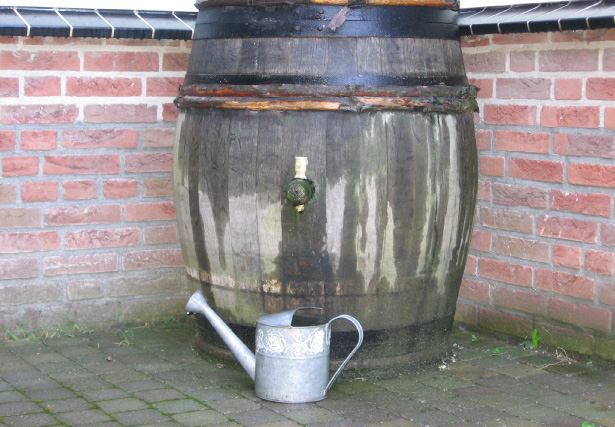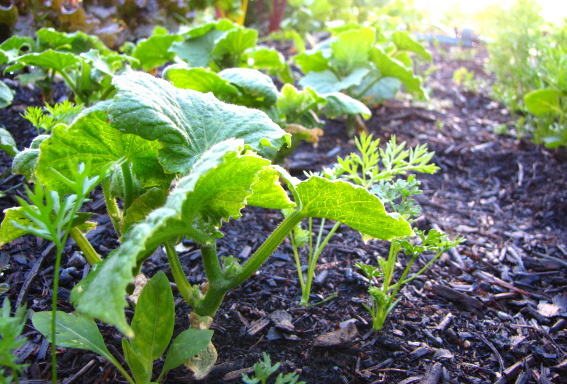Home Gardening: Quick Tips to Efficient Watering
Save Time and Money with Water Conservation

In Utah’s dry climate, water is a gardener’s best friend. Water conservation is an important aspect of the home garden, and understanding efficient water management techniques can save you time and money. Knowing how to water properly will help you to maintain a more productive, sustainable garden and help the environment by reducing your consumption of this precious resource.
- Watering at night when evaporation rates are lowest gives plants a chance to take in the water that has been applied to the soil. This will also allow you to water less, as more water is being used by the plants.
- Microclimates in your garden can lend a helping hand in water conservation. Although most fruit and vegetable plants require full sun, many plants such as spinach, kale, mint, chives, and parsley are shade tolerant. Planting shade tolerant plants in areas of shade and low wind will help reduce the amount of water you use. Get to know these areas, as they will change over time and can become useful as you plan a garden every year.1
- Another great tool you could use, depending on where you live, is a rain catchment system or rain barrel. By catching and storing rainwater, you can reduce the amount of water is used from your area’s water supply. This process can help you use rainwater that was wasted on open soil and save it for dry days instead of tapping into your local irrigation system.
Did you know?

mulch to conserve space and water.
According to the 2010 Utah Division of Water Resources report2, Utah’s per-capita water use is among the highest in the nation despite being the second driest state, with approximately 18 gallons of water being used on 1 square foot of landscape. Implementing efficient watering strategies can help reverse this trend.
Also, did you know that in 2010, rain catchment in the state of Utah was legalized through Senate Bill 32? Now, with revisions to the bill in 2013 (renamed Bill 36), Utah allows annual household rainwater collection via one 2,500 gallon container or more than one container with an aggregate capacity of no more than 2,500 gallons.3 This harvesting limit could provide free water for a large percentage of the growing season. For more details on rainwater catchment in Utah, visit the Utah Division of Water Rights.
More Easy Tips
- Plant everything close enough together so that you can still weed efficiently while using up potentially wasted ground space. Planting close together will help maximize use of your garden while minimizing the amount of water that is wasted on open soil. This will also help reduce the amount of water and space available for weeds to grow.
- Many people make the mistake of watering all plants in the garden equally. This is a common misconception. Shrubs and many other plants, such as raspberries, don’t need as much water as tomatoes or lettuce. Segregate plants in areas of your garden based on water need and adjust your watering accordingly.1
- Planting seasonal crops will also help conserve water. By planting crops that need a lot of water early in the season, you can save the water you would normally use from irrigation. On the same note, if you plant species that require less water later in the summer, you won’t need to use a lot of the resource when it’s needed most.
- Using mulch in your garden can also help by reducing the amount of water lost to evaporation. This layer also acts as an insulator for both hot and cold days, and can help reduce the impact of varying temperatures on your plants.
As mulch breaks down, it releases organic matter into the soil, helping to build up the soil’s capacity to hold moisture longer. Mulch is also effective in reducing the number of weeds that can grow.4 For detailed information on mulching, see Koenig, Farrell-Poe, and Miller’s (2010) extension fact sheet, entitled: Using Mulches in Utah Landscapes and Gardens.5
There are other helpful resources for the home gardener on Utah State University’s Extension Website at: https://extension.usu.edu/.
References
- 1Rupp, L.A., Varga, W.A., Cerny, T.A., Reid, C.R., & Kuhns, M. (2002). Selection and culture of landscape plants in Utah: A guide for high mountain valleys. Utah State University Cooperative Extension. Retrieved from: http:// extension.usu.edu/files/publications/publication/ HG_500_2.pdf
- 2Utah Division of Water Resources. (December 29, 2010). Municipal and industrial water use in Utah. Retrieved from: http://www.water.utah.gov/Reports/MUNICIPAL%20AND%20INDUSTRIAL%20WATER%20USE%20in%20UTAH.pdf
- 3Utah Division of Water Rights. Frequently Asked Questions. Retrieved from: http://www.waterrights.utah.gov/wrinfo/faq.asp#q1
- 4Pettinelli, D. Tamsett, A. Mulch Basics. University of Connecticut Cooperative Extension. Retrieved from: http://www.ladybug.uconn.edu/factsheets/tp_05_ mulchbasics.html
- 5Koenig, R., Farrell-Poe, K., & Miller, B. (2010). Using mulches in Utah landscapes and gardens. Utah State University Cooperative Extension. Retrieved from: http://extension.usu.edu/files/publications/factsheet/HG_
May 2013
Utah State University Extension
Peer-reviewed fact sheet
Authors
Jordan Burningham & Roslynn Brain; Department of Environment & Society


